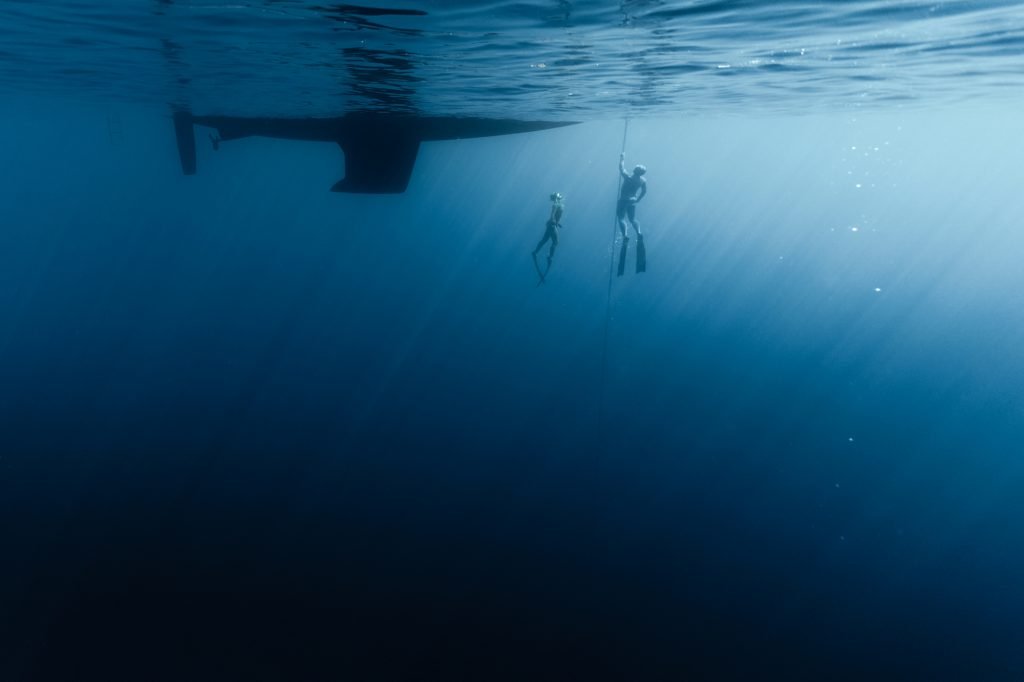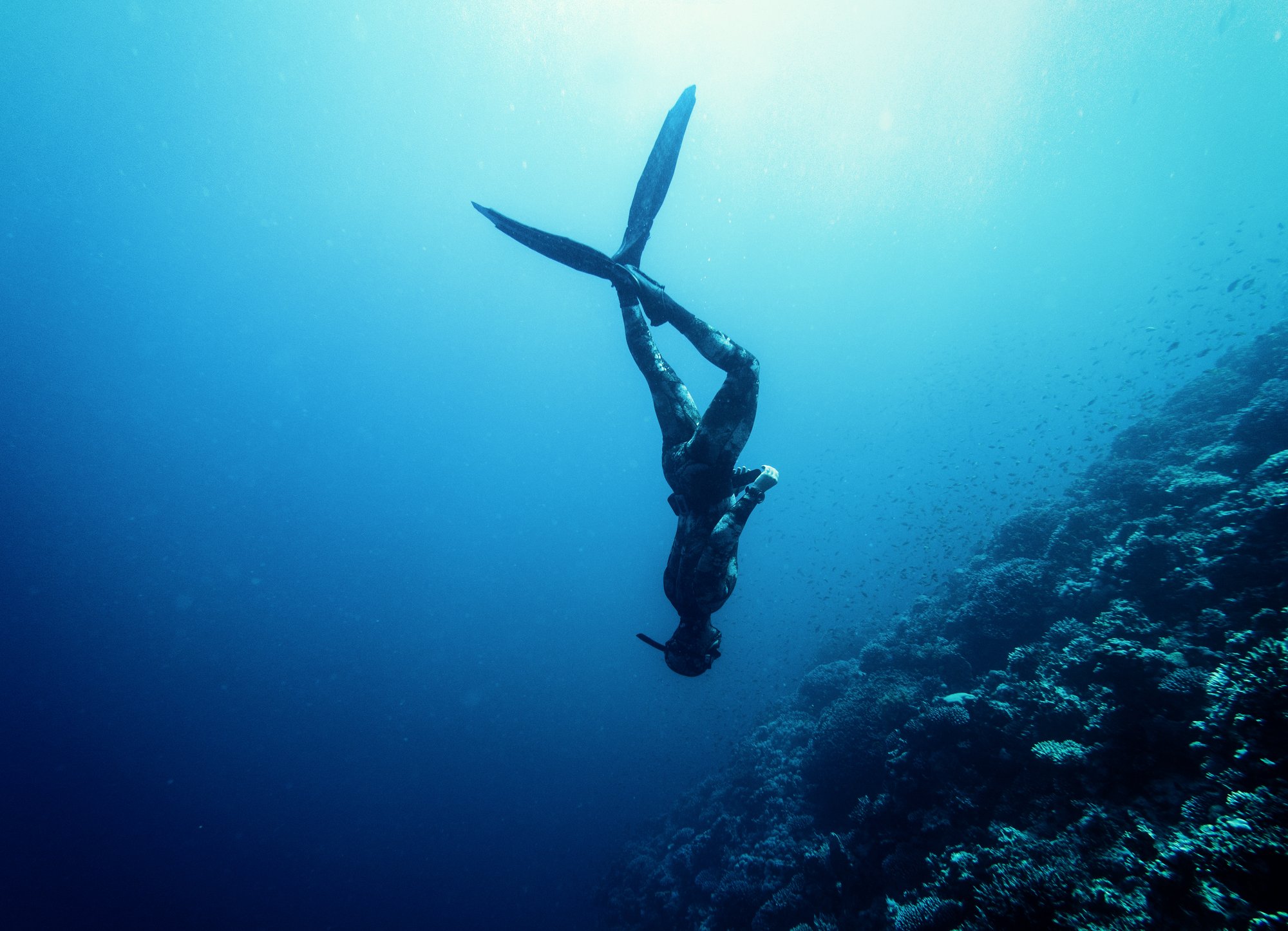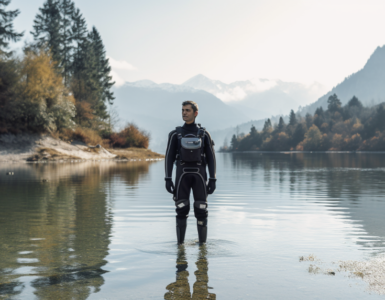Freediving is one of the most exciting outdoor sports known to man, and it has been increasingly popular over the years. That’s probably because it’s one of the few sports that really tests the capabilities and limits of the human body in a beautiful yet dangerous environment.
Trying out this extreme sport whether as a recreational activity or as a serious sport can be highly rewarding and challenging. Just take a look at these world records of the deepest free dive across different freediving disciplines to give you an idea of how humans have been able to take on the deep blue sea.
What is freediving?
Before all that, however, let us first define what freediving is. Simply put, it’s an underwater discipline also referred to as apnea that involves divers who immerse themselves through a ventilation blockage system.
Think of it this way. The diver takes a single breath of air then diving as deep as he can without the use of a tank or any other breathing equipment. He braves the deep, cold, and dark waters, and fights against a crushing water pressure, all by simply relying on his physical and mental abilities until he can come back to the surface.
It’s a practice that has been around for more than a thousand years, starting as a way to catch seafood and precious items like pearls, before finally evolving into the competitive sport that it is known today.
There are many benefits to freediving, including learning how to control your breathing, relax your muscles, manage your stress levels, and be more aware of your surroundings. However, there are just as many risks, and these can quickly prove fatal.
This is why proper training and guidance is a must before trying out this activity in order to protect yourself from the dangers of the water and freediving itself.

Deepest free dive
Now, just how deep can a human dive? Well, the world freediving record is currently held by Herbert Nisch, an Austrian freediver with a stunning record of 214 meters or 702 feet for the no limits freediving discipline, earning him the title of “the deepest man on earth”.
He actually managed to beat his own record with a new one in 2012, at an even more impressive depth of 253.2 meters, although he was injured in the process. It’s also his longest time holding breath at more than 9 minutes.
That may not seem like much, considering that the world record for holding breath underwater is currently at 22 minutes, but it’s definitely way more than what the average individual can pull off.
And aside from all this, he also has 33 official world records on all the other freediving disciplines that are recognized by the AIDA International.
Freediving disciplines
It’s important to know that there are actually many different freediving categories that professional divers can participate in and even earn records for. There are generally two categories for pool freediving and four for open water freediving, but people are always coming up with new challenges all the time.
After all, freediving paints a unique picture of the strengths of mankind in diving into the deepest parts of the ocean with just a single breath and nothing more.
Pool freediving
Pool freediving is divided into two disciplines: static apnea, and dynamic apnea. The first one is akin to what we usually do as kids, which is to essentially dip our heads in a pool of water and hold our breaths for as long as possible.
On the other hand, dynamic apnea entails a lot more movement, since it requires swimming across the pool for the maximum distance they can without coming up for air in between. This can be done with or without fins.
Open water freediving
As opposed to pool freediving, open water freediving is a lot more dangerous and complicated, since it happens significantly deeper in often unpredictable waters where you don’t know what you might encounter. And of course, there’s always the issue of cold temperatures, water pressure, and underwater currents.
No limit freediving
The no limits freediving (NLT) discipline is the one out of all the other disciplines that require the deepest free dives. This is made possible by using a weight to pull the diver deep into the ocean and then using a buoyancy control device in order to pull him back up to the surface.
This alone makes this discipline so noteworthy and popular with the media and the general public.
Constant weight freediving
Arguably the purest form of freediving is the Constant Weight freediving discipline, which is divided into two sub categories- one where the diver can use freediving fins (CWT), and another where no fins are used to dive (CNF).
It’s considered as pure since the diver has to descend and ascend along the dive line without the use of any paraphernalia. Essentially, it’s swimming as far down as you can.
Free immersion freediving (FIM)
Another open water freediving discipline is the Free Immersion freediving (FIM). How this works is the diver makes use of the dive line in order to pull himself down to the bottom, and then again back up to the surface.
In order to ensure the diver’s safety, there is a lanyard attached to his legs (rather than his wrist as in the case of other freediving disciplines) to keep him by the dive line without the lanyard interfering with his movements.
Variable weight freediving (VWT)
There’s also the Variable Weight freediving (VWT) discipline, which isn’t technically the most competitive discipline, but is still recognized by AIDA International, and therefore records can still be set under this discipline.
It’s quite similar to no limits freediving in the sense that a weight is used to pull the diver down to his desired depth, but rather than using a buoyancy device for ascending, the diver swims up with his fins while also pulling on the dive line.
Freediving record holders
Currently, Herbert Nisch is the only man in the world who has been able to dive beyond 700 feet (even beyond 800 feet) while freediving. He is also one of the four freedivers across the globe who have managed to dive beyond 560 feet, wherein two divers actually perished during the process.
As we have mentioned earlier, there is a lot of danger that comes with freediving. For one thing, your body loses heat 25 times faster than usual. You are also highly susceptible to decompression sickness, and of having an increased nitrogen concentration in your body.
But even with all that, there are still lots of divers who are really determined and passionate to conquer the ocean depths and test the limits of what is humanly possible. Below are the records that prove the capabilities of the human body when it comes to freediving:
Constant weight freediving- with fins (CWT)
Men: Alexey Molchanov (120 meters)
He is a Russian freediver who in October 2016 set a world record for the deepest CWT dive in La Paz, Mexico by diving at a depth of 129 meters within 3 minutes and 50 seconds.
Women: Alessia Zecchini (102 meters)
Alessia Zecchini’s record paved a name for herself in 2017 when she participated at the Suunto Vertical Blue 2017 freediving competition, held at the Dean’s Blue Hole in the Bahamas. She set an impressive record of 102 meters accomplished in 3 minutes and 30 seconds.
Constant weight freediving- without fins (CNF)
Men: William Trubridge (102 meters)
Also set at the Dean’s Blue Hole in the Bahamas, William Trubridge set his 18th record in 2016 with a diving depth of 102 meters within 4 minutes and 14 seconds. That’s half of the total depth of that sinkhole lagoon.
Women: Sayuri Kinoshita (72 meters)
In the same year, Japanese diver Sayuri Kinoshita set her record in CNF freediving with a depth of 72 meters while being underwater for a total of 3 minutes and 14 seconds. Such a record is a first for any Japanese diver.
Free immersion freediving (FIM)
Men: William Trubridge (124 meters)
Another world record set by William Trubridge is one for free immersion freediving, which he achieved in 2016 when he plunged 124 meters deep into the ocean while being submerged for 4 minutes and 34 seconds. This actually broke his previous record of 121 meters.
Women: Jeanine Gasmeijer (92 meters)
Also in 2016, Jeanine Gasmeijer took part in the Bonnaire Deep Sea Challenge and managed to set a new world record by diving a total depth of 92 meters and holding her breath for 3 minutes and 46 seconds.
Variable weight freediving (VWT)
Men: Stavros Kastrinakis (146 meters)
With a total diving depth of 146 meters accomplished within 3 minutes and 33 seconds, Stravos Kastrinakis holds the record for the deepest VWT freedive, which he achieved while freediving in Kalamata, Greece back in 2015.
Women: Nanja Van Den Broek (130 meters)
A truly impressive female freediver is Nanja Van Den Broek, with 20 different freediving records across various disciplines. In 2015, she set a new record for VWT freediving with a diving depth of 130 meters.
No limits freediving (NLT)
Men: Herbert Nitsch (214 meters)
Hailed as the deepest man on earth, Herbert Nisch boasts of over 30 freediving records, with his best feat yet at an impressive 214 meters within 9 minutes. This was his record back in 2007, and he has been trying to beat it ever since.
Women: Tanya Streeter (160 meters)
When it comes to freediving women, there’s no one better than Tanya Streeter, who managed to dive a total depth of 160 meters within 3 minutes and 60 seconds. She did this in the waters of the Club Med Turkoise within Providenciales.
To summarize
There’s just something so enticing and mysterious about freediving that makes it feel so surreal. After all, you’re not just pushing your body to its absolute limits, you’re also doing this while witnessing the wonders of nature under the deep blue sea.
It may be really scary and heart stopping at first, especially since it’s considered to be way more dangerous than base jumping, but once you get a taste for it, you will definitely come back for more. This is evident in the way many freedivers attempt time and again to set world records for the deepest free dive.
One thing you need to remember, however, is that it’s a fun and exhilarating physical challenge that requires honing a special set of skills in order to safely accomplish. If you wish to try out this sport, there are lots of diving courses you can take in order to hone your abilities and prepare you for the demands of freediving.




